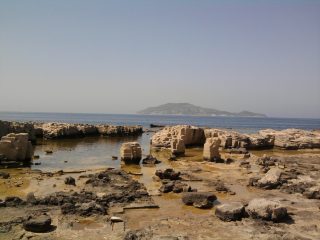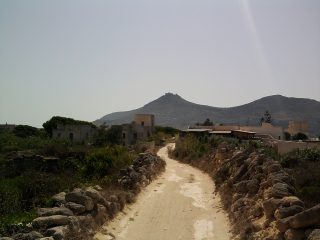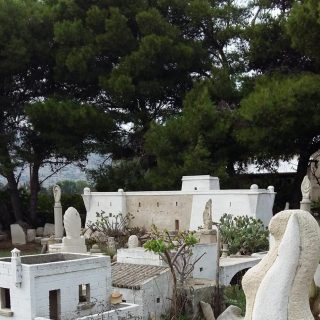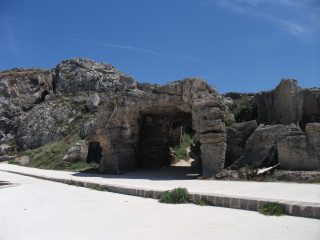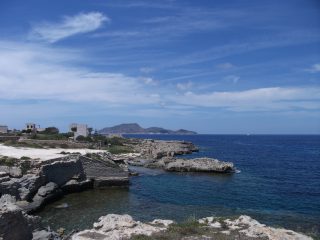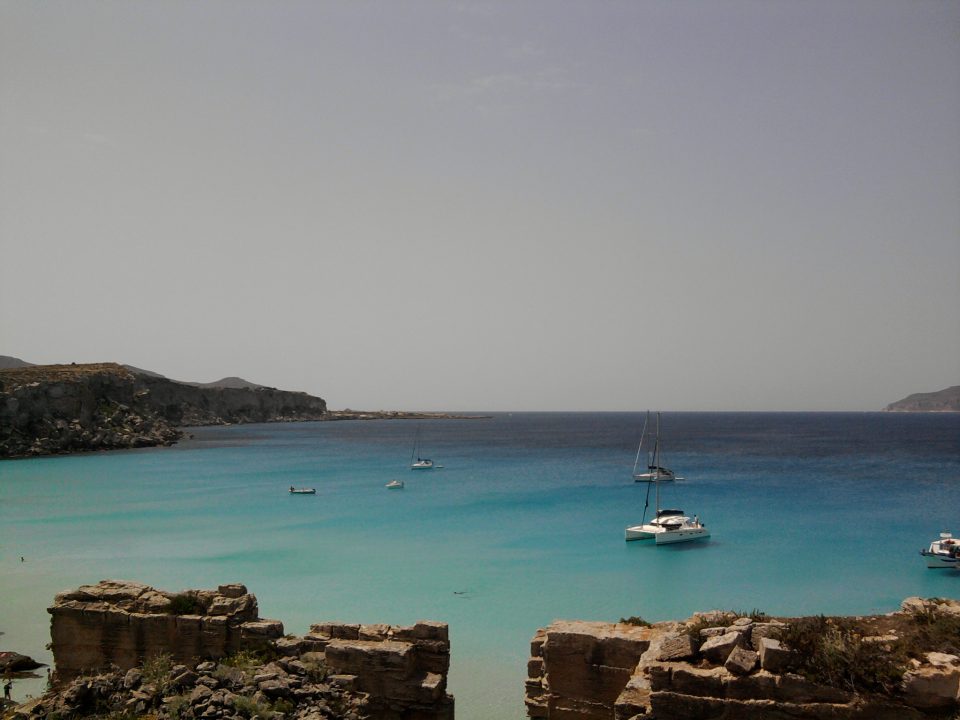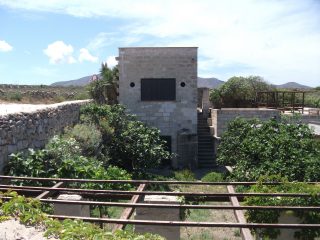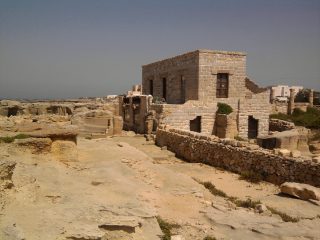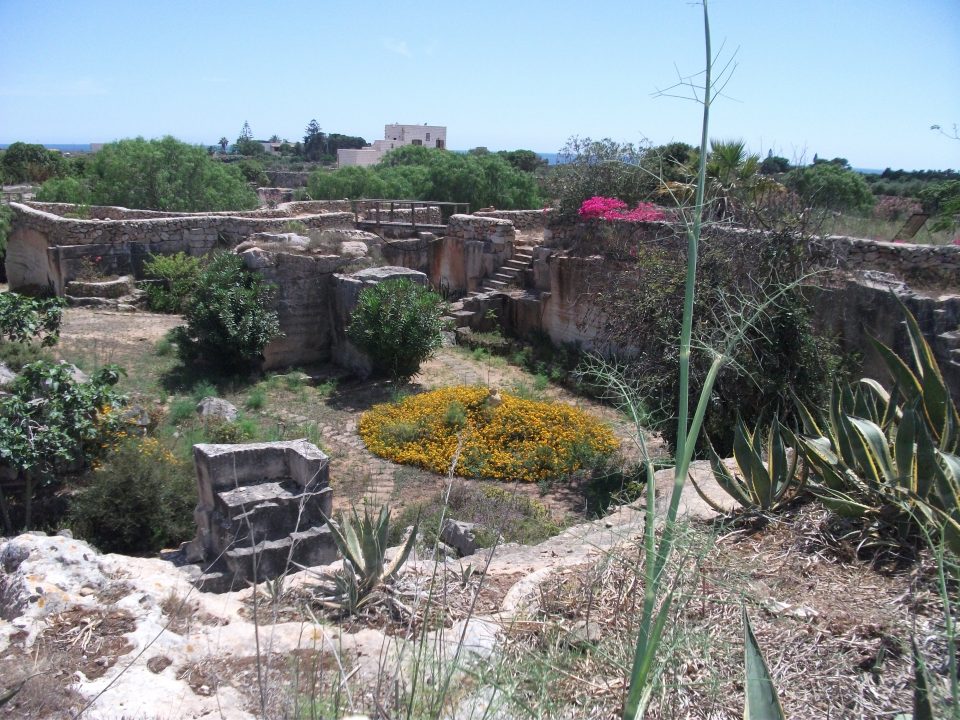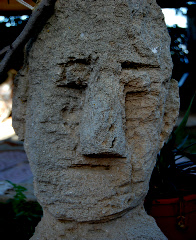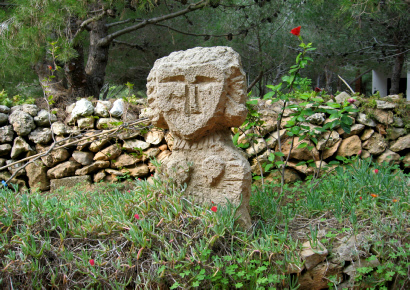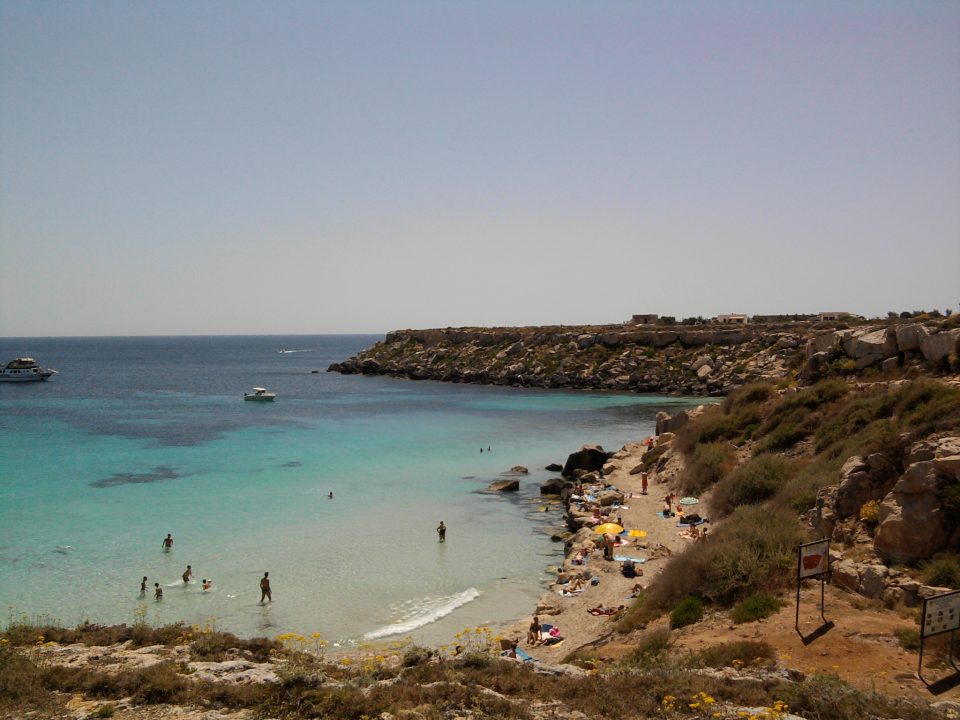Starting a tour of Favignana island, one of the three Egadi islands, in front of Trapani in Sicily.
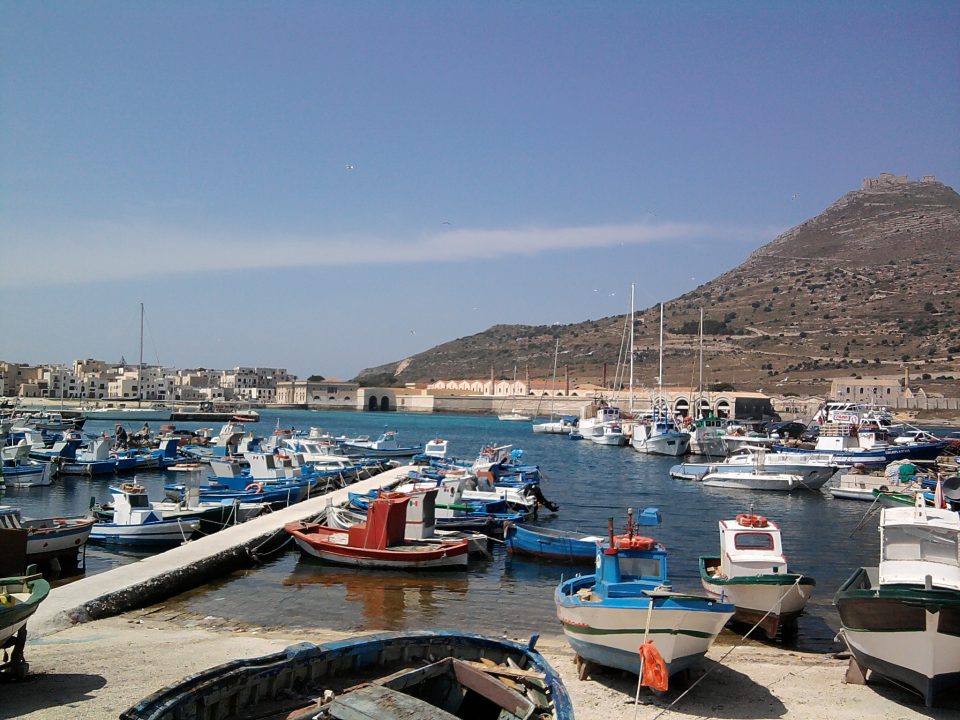
Here we are, just got off the hydrofoil at the small port of Favignana, called San Leonard pier. We are ready to start our tour of Favignana island. The bay itself is spectacular. Looking under the mountain, with its top covered by a pretty little cloud, the chimneys of the ancient Florio tuna fishery, lately become a museum, capture my attention. Walking from the port to the village the first thing I notice for its beauty is the art nouveau Palazzo Florio, recently restored. Clearly, the Florio family has had a great influence here.
Ready for touring the island
First of all we want to rent a bike. We love cycling, even if the nice man suggested us we should rent a scooter to go behind the mountain. I think we are young, we can do on foot!
So we are to begin the tour of the island, whose perimeter is 33 km, from the north side which turns to Trapani and the island of Levanzo, and first we are heading towards east.
The landscape is spectacular. Favignana is a special island. It is barren, hot and windy, as Trapani. If it were not for the construction of new houses or new hotels, populated by workers, at times it would seem uninhabited.
Silence, broken only by birdsong and by the rustling of wind through the leaves of trees. They say, however, that in summer months there are many people around. Evidently, in February, tourism has not begun despite the nice weather.
Antonino Campo sculptor
First, in Badia district there is a sculptor, Antonino Campo, who has created an art gallery in the open air. These evocative statues made by tuff, scattered here and there, placed on low columns into the ground, sometimes bleak, sometimes muddy, make the atmosphere very special.
San Nicola and Scalo Cavallo
Left the sculptor, now we want to ride to the archaeological site of San Nicola, inhabited since prehistoric times, which shows signs of a late Hellenistic necropolis. Along the coast you can see two small bays, Cala Graziosa and Cala San Nicola.
Then, going on toward Red Bay, we pass through Scalo Cavallo, an area of wild beauty. Rocks fall abruptly down to the sea. Here “pirriaturi” (miners), in their work of cutting away rocks to get the tuff, have created a kind of platform where tourists can lie down to sunbathe (and this is what my friends are doing). Above, the miners “artists” have created a tunnel inside the mountains, where in summer groups of people can get a cool shelter from the scorching sun. It would be nice to go inside it till the end, but honestly I’m afraid of mice. This is because mice scare me to death, though I can’t see them.
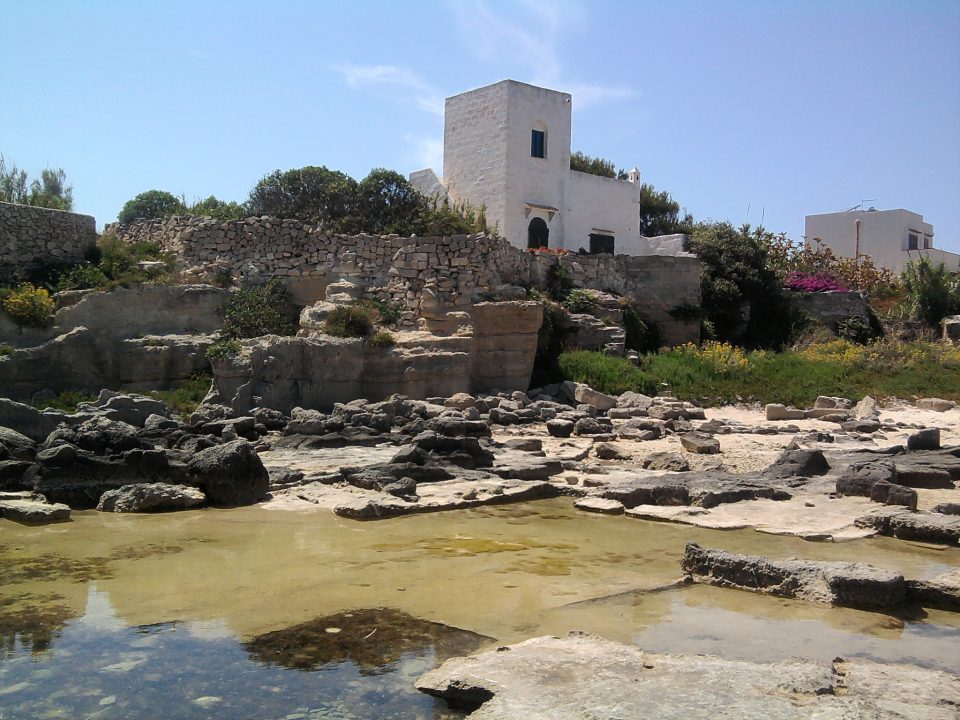
Favignana Red Bay
Tuff quarries, namely quaternary limestone, forming a very special landscape, characterize the whole Favignana island. Gardens and houses built under street level. Rocks, beaches with a bizarre line, designed by man, though natural.
Such as Red Bay, a series of galleries and curiously shaped rocks, in front of a dreamy blue sea. Legend tells it has that name (red bay) because the gigantic Punic War took place in front of it, in the sea between Favignana and Trapani. It ended with the victory of the Romans. The victims were so many the sea became full of blood. Consequently depths are rich in archaeological finds.
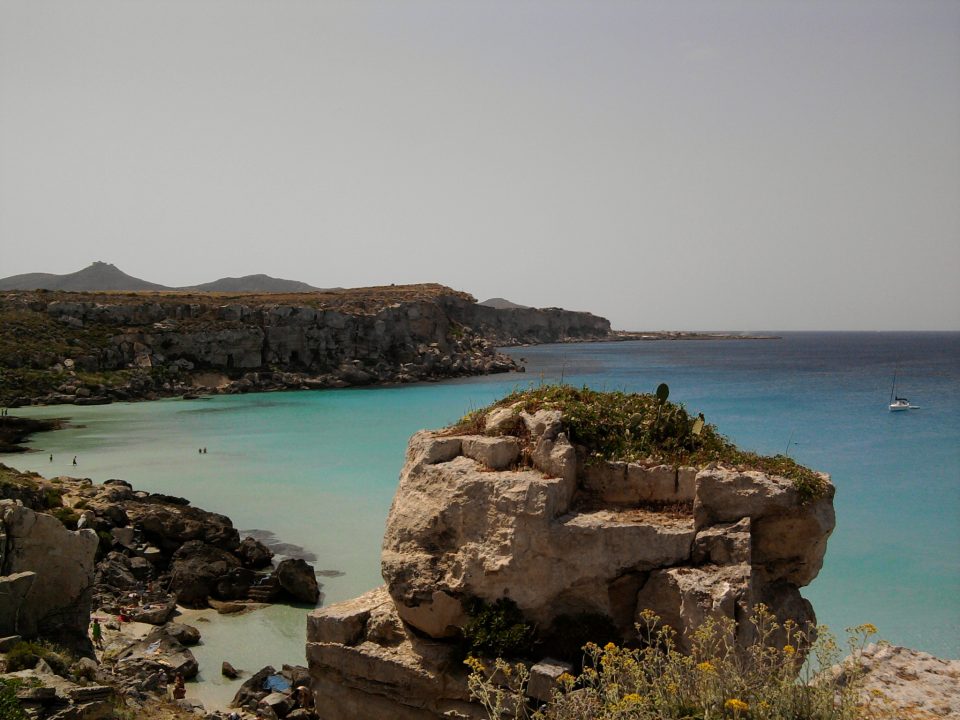
As well tuff galleries make special the close Cala del Bue Marino, with its amazing blue sea.
Tuff quarries
Tuff along with fishing, in the recent past has been the primary source of Favignana’s economy. The tuff mining reached its maximum development especially in the period between 1700 and 1950.
Quarries, called “pirrere” have changed not only morphological the shape of the seashores. In fact they has used tuff to build homes and home interiors, so it outlined the whole landscape and architecture of the island. The quarries have become works of art and “pirriaturi” artists of the tuff, true masters of carving. It is a difficult and hard art, made of hard work and sweat, which committed all their days, but repaid them with the pride of uniqueness.
Tuff workers
Pirriaturi or stonecutter had to be very strong in body and spirit to face the hardships of working in open caves or closed caves which snaked for hundreds and hundreds of meters in the heart of the earth. His greater skills are “trinciari Cantuna” (cutting tuff in bricks) following perfectly parallel lines. He had to be fast enough to overtake the nearest workmate, thus avoiding the hassle of dust raised by him.
And so, to go up and down the quarries, they also created “scannaddi” (tuff ladders). The quarryman, although accurate in cutting, had still to square the “cantone” (block of tuff) and make it of the right size, with a kind of ax. Then they had to bring the blocks up to the “Pirrera” (quarry), using a wood winch where the blocks were bound and pulled over. Here they stacked blocks in bigger piles of 22 blocks each one.
Sea was the only route for commerce of tuff. Tuff blocks carried by carts were loaded on large boats called “schifazzi”. They were carried on board from hand to hand, through special hand-made slides placed along the coast.
Since the postwar period the tuff has gone out of business for the advent of industrialized building systems. Currently the use of Favignana tuff is particularly suitable for the renovation and restoration of monuments because it is a tuff tougher than others and weather resistant.
Villa Margherita – Hypogeal Gardens
And now I am at Villa Margherita. You need to call to book a tour in the lovely gardens called “gardens of impossible”. Mrs. Gabriella Campo began to realize it about 30 years ago by planting specimens in desert areas around the disused tuff quarries. She has called it gardens of impossible because she was told it was impossible to grow something in a place so dry and beaten by strong winds from the south. But the lady has managed to grow about 200 species of plants and has created a really unique place. In 2005 she also renovated the abandoned quarries calling them Hypogeal Gardens.
To walk through the paths carved into the rock, or under the shade of trees sounds like a dream when it is hot like today. I am enjoying their freshness, their fruits and flowers fragrance. I guess finding a shelter in this coolness must be like heaven in August, when sun is very hot.
Uncle Sarino sculptor
Some people are talking about a very special tuff artist, and so I’ve learnt of Rosario Santamaria (Zù Sarinu), artist and environmentalist “before its time”. “Pirriaturi” (tuff worker) since he was a boy, he discovered the tuff could be carved to create imaginary figures. When he was young, Sarino worked in the tuff quarries and when he was old he was driven to carve it by such a great attachment to the matter with whom he had dealt all his life. He would give it naive and primitive forms, full of pathos.
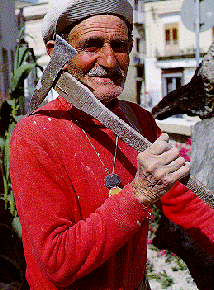 You could find him busy in working the tuff on his balcony. Within the enclosing walls there were a large amount of sculptures and also wooden compositions, bizarrely shaped, hanging on the walls. The heads carved in the tuff would hit more. He put them on the gates of houses, often with no permission from the owners. He painted and sculputed also the rocks in the bays. They were everywhere in Favignana: rectangular, cubic, oval, and all looking at you, making you feel observed, almost embarrassed. Zu Sarino, seeing anyone involved by his works, would ask them if there was anything they liked and would give them as a present. What a pity, very few works remain of all his work.
You could find him busy in working the tuff on his balcony. Within the enclosing walls there were a large amount of sculptures and also wooden compositions, bizarrely shaped, hanging on the walls. The heads carved in the tuff would hit more. He put them on the gates of houses, often with no permission from the owners. He painted and sculputed also the rocks in the bays. They were everywhere in Favignana: rectangular, cubic, oval, and all looking at you, making you feel observed, almost embarrassed. Zu Sarino, seeing anyone involved by his works, would ask them if there was anything they liked and would give them as a present. What a pity, very few works remain of all his work.
The Blue Bay
We’ve started biking again: we just passed Punta Marsala and now we can see an amazing Blue Bay (Cala Azzurra). The name is perfect: water of sea is bright blue and it is a pleasure just to watch it. Anyway if I could dive in it, I would be happier.
This is a picture of some years ago but I have been told that the sand has disappeared, hidden by sea. Though this problem Blue Bay is beautiful the same.
Going on touring the island
Going on with our tour of Favignana, we are seeing Punta Fanfalo. Next in the same direction there are Cala Tuono (Thunder Cave); the unique cave called Grotta Perciata; Lido Burrone, family friendly beach; Cala Monaci (Monks Cave), another place that impressed me for the blue sea; Punta Longa, with the small fishers village and the very little port near which there are pretty small rocky coves.
Then there is Marasolo, another sand-rock beach and here we are again relatively close to the village.
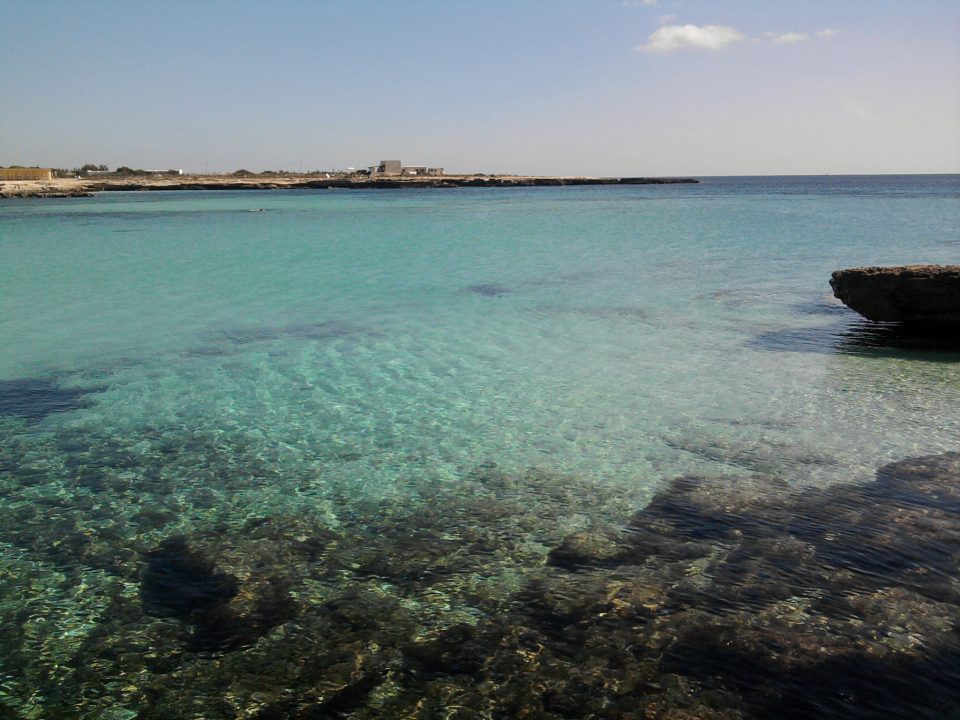
Favignana, the sea butterfly
At this point the distance between the north and south of Favignana is smaller and in fact the painter Salvatore Fiume called the island a “sea butterfly” because of its characteristic shape to “staple”. The present name derives instead from the Zephyr, a warm wind of the west, which determines the mild climate.
I’m now under the mountain, which has a tunnel to cross it. I am afraid to enter it by bike. It looks dark inside and what if drivers wouldn’t see me? Walkway is too narrow. Should I go there? No, I prefer to walk aside where the road was interrupted by a landslide many years ago. Here it is also more scaring though really spectacular. At times the mountain seems to fall down on me. The seagulls and the birds are the owners of the skies. It is absolutely wonderful and wild.
And later, down a descent, there is Cala del Passo.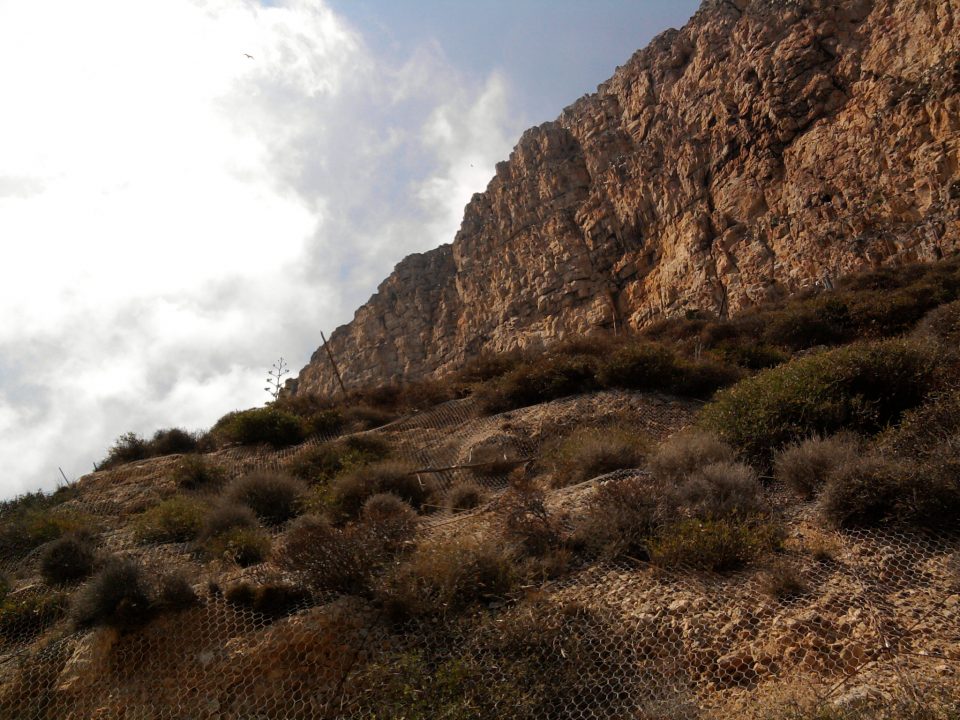
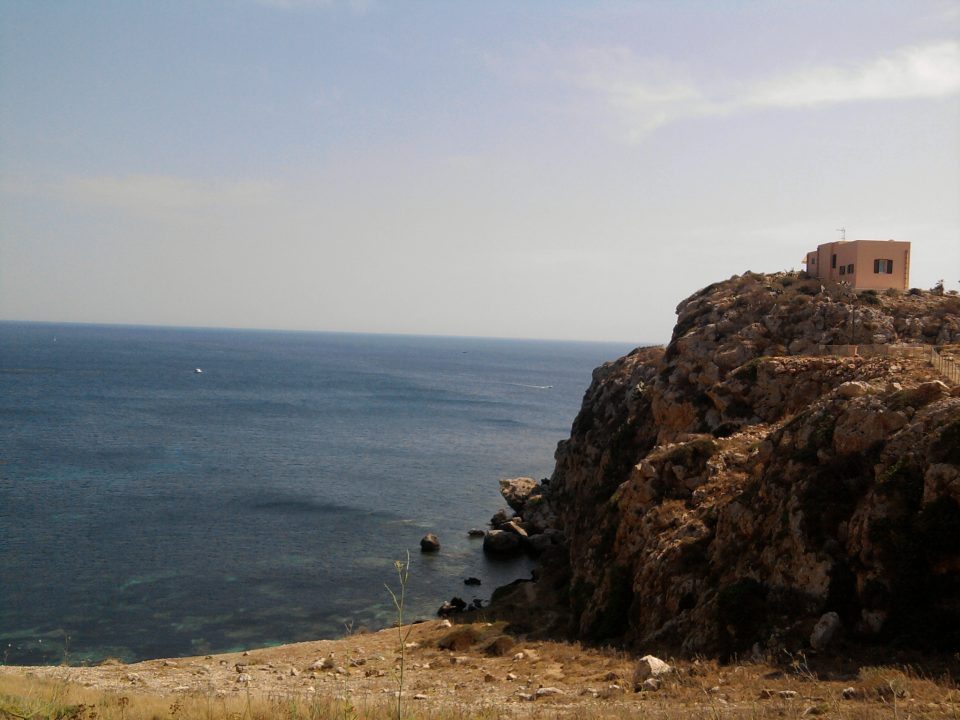
The other side of the island
Walking on, the beautiful Cala Preveto opens at the foot of a valley. The bay greets me with a pebble beach lapped by a wonderful sea. An island full of seagulls, the small islet Preveto, is easily reached by swimming.
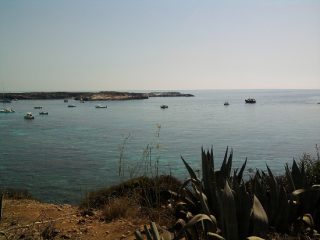
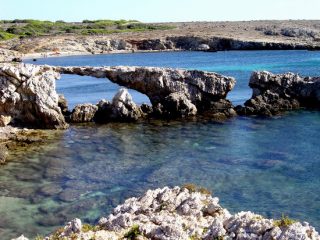
And next, going on with our tour of Favignana, we see Cala Stornello. Then we see Round Bay (Cala Rotonda) characterized by a beautiful stone arch shaped by wind and salt (arch of Ulysses), and Cala Grande.
At Punta Sottile there is a lighthouse. We are now in the wildest side of the island. Maybe it will be wild not for a long time, but now there are just a few buildings in this part of the island. Only a road, a few houses, of which several under construction. A holiday village among the oldest to be built. If I was looking for peace I got definitely the right place.
From Punta Sottile to north, until Punta Ferro, coast becomes more rocky and barren.
Not far from Punta Faraglione I can see the beautiful Cala del Pozzo, a bay with rocks and white sandy beach, with rocky bottom rich in life and color. When the scirocco wind blows this bay is the calmest.
The B zone Marine Riserve and its caves
For now I will stop here, because I can’t go on further by bike. After passing Punta Faraglione you enter the “B” zone of the marine reserve, with waters rich in flora and fauna. It extends up to Grottarola. In the section there are also Trapanisa Cave, Cave of the lovers, the Blue Grotto. Looks like to visit them it is necessary a boat or maybe it is possible to go on foot? Anyway I will not go on to descover, because I am tired and I still have to come back uphill before sunset. My friends are waiting me at the beach!
Cala Funeri, Cala Rimbs, Punta Vallirara can be reached from the village, past the tuna fishery Museum, going on the street behind it. Here sea is dark and wild. The lovely La Praia beach, instead, is located in the village in front of the port, just steps from the tuna Museum.
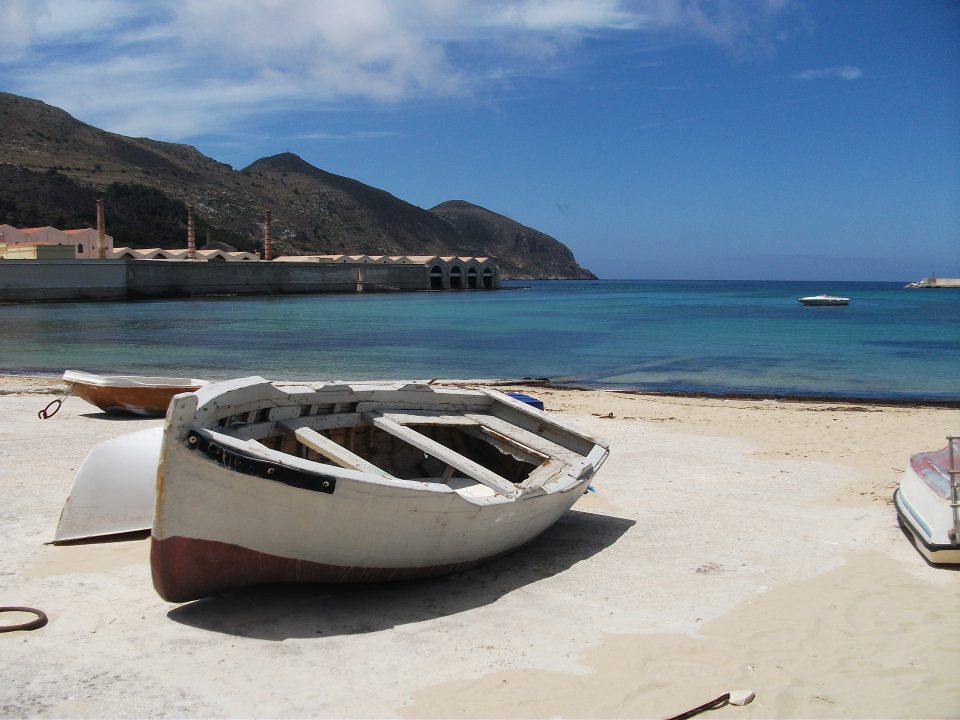
source:
